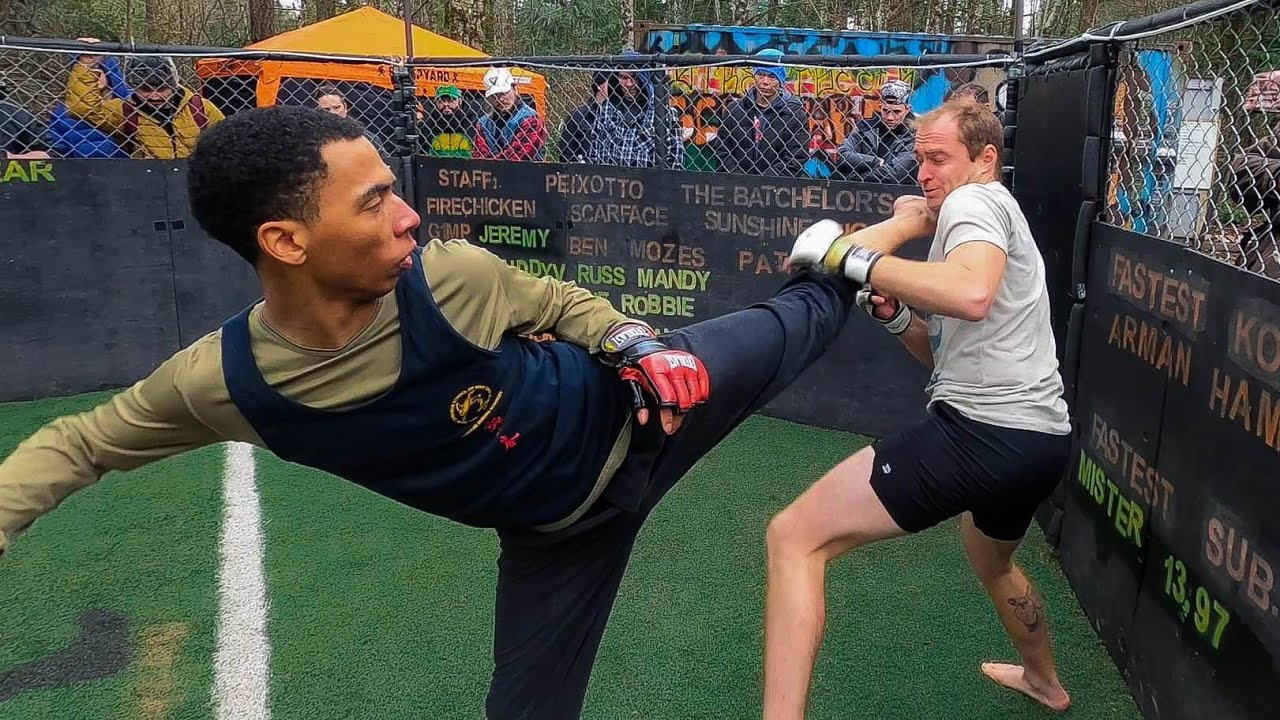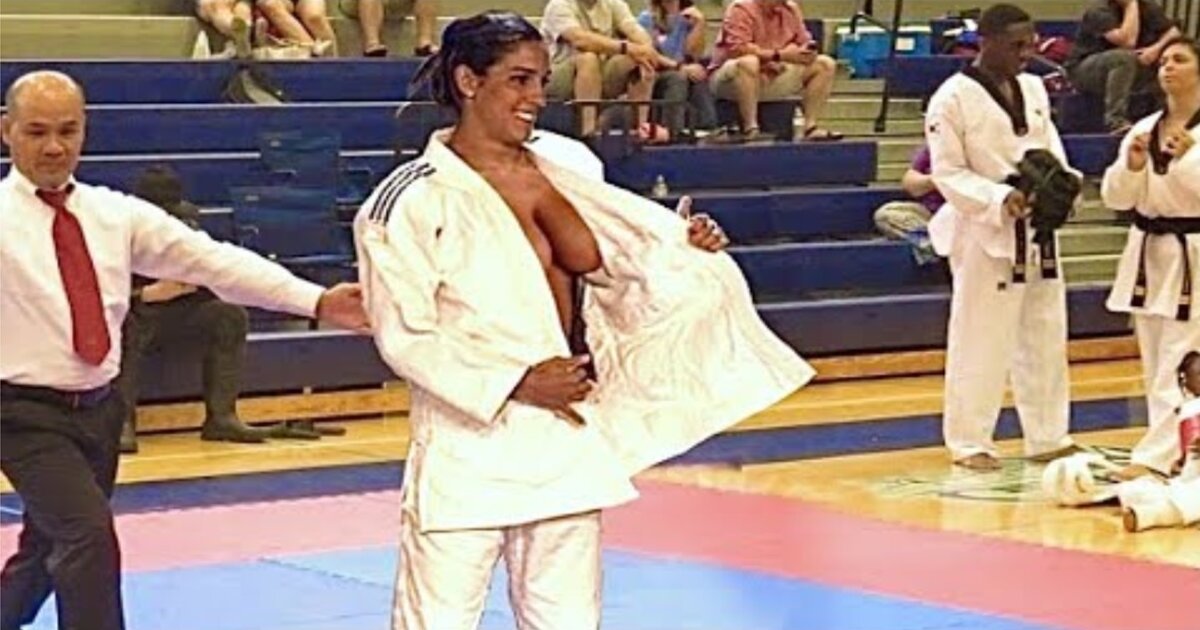The transcript below is from the video “Kungfu Master vs Bully | Best Kung Fu Style” by Brutal TV.

Brutal TV:
What is the best defense Kung Fu style?
Chinese Kung Fu is a series of fighting styles which has developed over a long historical period in China. Nowadays, it is regarded as a traditional sport gaining more and more popularity and even stands as a representative for Chinese culture. Styles including Shaolin, Tai Chi and Qigong have many followers worldwide. Although being fighting styles, Kung Fu advocates virtue and peace, not aggression or violence. This has been the common value upheld by martial artists from generation to generation. With a number of movement sets, Boxing styles, weapon skills and some fighting stunts, Kung Fu keeps its original function of self-defense. In this video, we are going to take a closer look at some of the best defense Kung Fu styles.
But before we do this, remember to give us a thumbs up and a quick click on our subscribe button to get more videos like this one and support Brutal TV. Thanks. But for now, let’s get back to self-defense Kung Fu style.
There are more than 400 individual styles of Kung Fu currently practiced around the world. Almost all of these are rooted in self-defense disciplines although some are more effective in real world scenarios than others. So let’s take a look at three of the most effective ones.

Brutal TV:
Choy Li Fut
Our first style is Choy Li Fut, a Chinese martial art and Wushu style founded in 1836 by Chang Heung. This system combines the martial arts techniques from various northern and southern Chinese Kung Fu systems. The powerful arm and hand techniques from the Shaolin animal forms from the south, combined with extended circular movements, twisting body and agile footwork that characterizes northern China’s martial arts, making Choy Li Fut one of the most complete and effective styles for health and self-defense. It emphasizes relaxed internal power rather than stiff muscular force. This is not only more effective in combat giving the smaller person an advantage but is also better for the practitioner’s health as it develops the entire body.
Unlike many other martial arts, Choy Li Fut contains a wide variety of techniques, including long and short range punches, devastating kicks, deadly sweeps and takedowns, lethal pressure point attacks, joint locks and grappling, making it one of the most well-rounded and versatile fighting systems.
This style of martial art is particularly useful for those who want to access techniques that can be used against multiple assailants and because of its divers-e selection of techniques Choy Li Fut can be hard to defend against.

Brutal TV:
Hung Gar
Hung Gar is another popular choice of Kung Fu if you are looking for solid self-defense techniques. Hung Gar’s earliest beginnings have been traced to the 17th century in southern China, more specifically legend has it that a Shaolin monk by the name Gee Sin Sim See was at the heart of Hung Gar’s emergence.
See was alive during a time of fighting in the Qing dynasty. He practiced the arts during an era when the Shaolin Temple had become a refuge for those that opposed the ruling class allowing him to practice in semi-secrecy. This southern Chinese Kung Fu style incorporates both external and internal methods. It emphasizes strong stances, notably the horse stance, long and shorthand techniques, notably the bridge hand, and the versatile tiger claw, which encompasses straight circular and angular movements making it useful for self-defense applications. The intent is to develop efficiency of movement as well as coordination. This results in superior inside maneuvers none more evident than the variation of kicks mostly executed below the waist. Although the execution of movement appears to be hard, this system in fact incorporates both hard and soft techniques in a multitude of directions. The execution of advanced techniques is complex. Research has determined that Hung Gar possesses more intricate hand techniques and stance maneuvers than any other traditional system from China.
We are at the halfway mark now, so just a reminder to like this video and subscribe to Brutal TV for more top quality fighting videos. Now, back to self-defense.

Brutal TV:
Wing Chun
Wing Chun is often considered the premier form of Kung Fu for self-defense. It is a concept-based Chinese martial art and form of self-defense utilizing both striking and sticking or controlling while specializing in close range combat. It is a relatively young martial art with most historians agreeing that it developed in southern China approximately 300 years ago. According to legend, Wing Chun was created by the buddhist nun Ng Mui who was a master of Shaolin Kung Fu.
Using her martial training and personal experience, she synthesized a compact form of Kung Fu to exploit weaknesses inherent in the other combat styles of her time and give an advantage to smaller fighters like herself. This new system was well guarded and passed on to only a few very dedicated students. Her style became known as Wing Chun after Ng Mui’s first student, a woman named Yim Wing Chun.

Brutal TV:
This form of martial art began to quietly spread throughout southern China, evolving as it was adopted into various groups. It gained popularity when grandmaster Ip Man began to teach openly in China and Hong Kong. His students continued the evolution and spread it all around the world. Today, many people have learned of Wing Chun through the late martial arts superstar Bruce lee or through the popular Ip Man series of movies.
This style of Kung Fu originated in and was developed for crowded urban environments such as the cities most people live in today. It is a close quarters fighting system that can be used even when assaulted in a confined space. It is primarily an empty hand system allowing someone to defend themselves even when unarmed. It is based on reflexive movements, training you to respond instantly and instinctually to a surprise attack as opposed to a consensual fight or sport combat match.

Brutal TV:
Wing Chun is simple, direct and efficient, eliminating techniques that are not needed so much in the modern world. While many systems of martial arts require a decade or more to learn, Wing Chun was designed to be learned in the shortest time possible. With regular consistent practice, you can learn the entire core system in about two years. Mastery of the system, of course, takes a lifetime. This martial art can be practiced by people of all ages, sizes, shapes and degrees of physical ability. It is equally suitable for both men and women. A martial art that uses structure rather than strength and timing rather than speed.
It is also based on natural human anatomy rather than mimicking the movements of animals. So it does not require extraordinary flexibility or athleticism. The emphasis on structure and relaxed intrinsic strength is part of what allows a normal-sized person to effectively defend against a bigger stronger attacker. Wing Chun trains for a simple reflex response to interrupt any attack, get the attacker off balance and put the fight on your terms. Other systems may block and then attack, Wing Chun defends and attacks simultaneously. It hits without warning from any position and uses the structure of the entire body to create power in a small space.

Brutal TV:
One of the main reasons why Wing Chun is so effective for self-defense is that it encourages the practitioner to remain relaxed and flexible, reserving strength for when it is needed to deploy strikes and counter-attacks.
What do you think of our self-defense choices? Which one do you think is the best? Tell us in the comments below. Don’t forget to like and subscribe to Brutal TV for more top fighting videos just like this one. Thanks for watching. We’ll see you next time.









